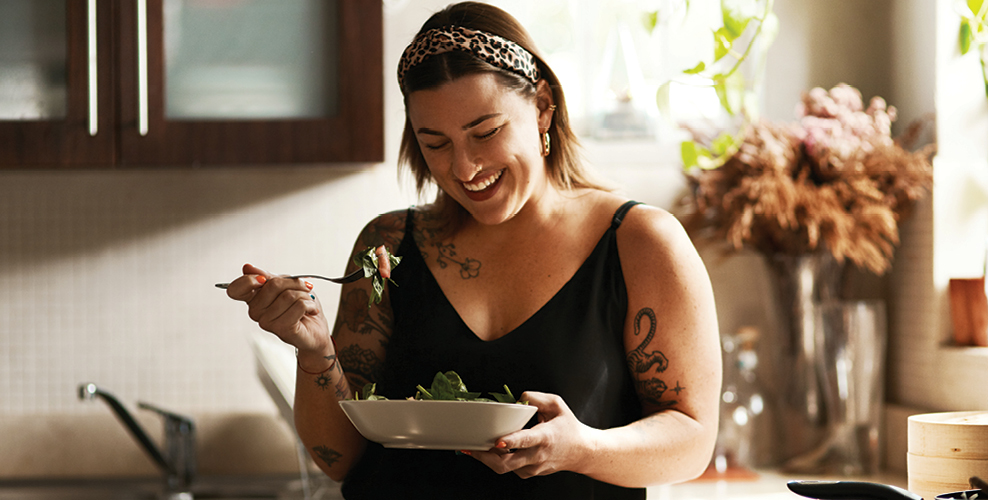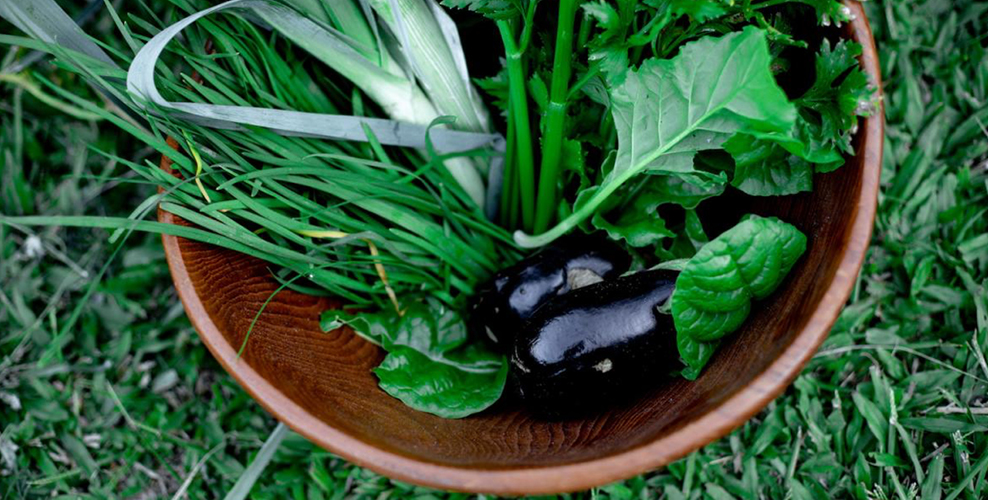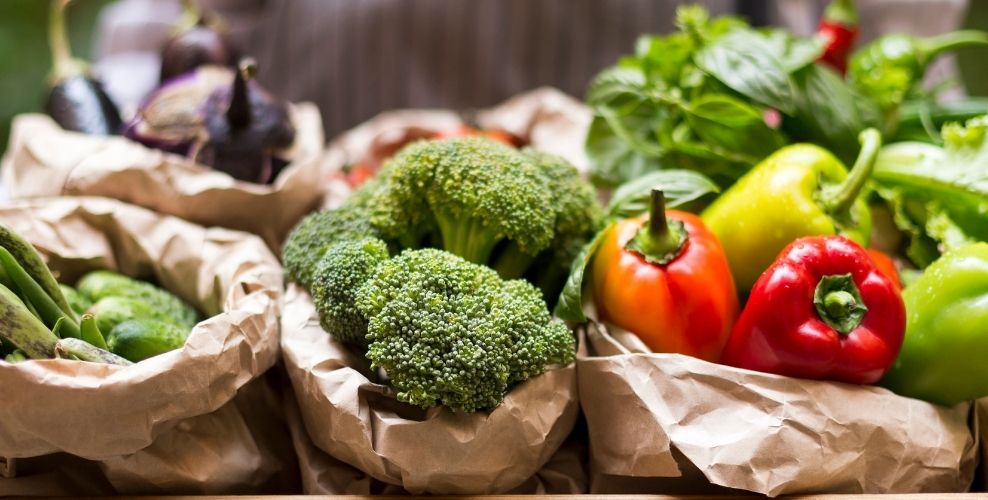How to detox the easy way: a clean eating plan for detox and liver support

Where do toxins come from?
Your body is constantly exposed to toxins in various forms. They come from obvious places like pollution, pesticides, cigarette smoke, contaminated food and water and harsh cleaning chemicals.
And they also come from less obvious places, like beauty products and ingredients in plastics and non-stick cookware. Your body even produces toxins as by-products of its normal, everyday metabolic processes.
The liver’s natural detoxification processes
Under usual circumstances, exposure to these types of toxins isn’t an issue, because the liver does an excellent job of metabolising and clearing them out to keep your body healthy.
But what happens if your liver isn’t doing its job very well? Or if your lifestyle exposes you to a greater toxic load than your liver can handle efficiently?
That’s when it’s a good time to support your liver’s natural detox processes by:
- Reducing your exposure to toxins
- Increasing your consumption of foods and herbs that support healthy liver function
Detox tips from Chinese medicine
In traditional Chinese medicine (TCM), the liver is not just regarded as being important for detoxification and digestive functions - it’s also considered responsible for nourishing, storing and purifying the blood, and for ensuring the smooth flow of blood and Qi (life force energy, pronounced ‘chee’) around the body.
However, in TCM it’s traditionally understood that lifestyle factors like overeating, over-indulging in fatty foods or not getting enough exercise can interfere with the liver’s ability to maintain the smooth flow of blood and Qi. When that happens, the flow of Qi and blood from the liver can become sluggish, stagnant or constrained, resulting in symptoms such as irritability and premenstrual mood swings.
A liver that’s struggling under its workload is believed to generate an excess of heat in TCM, sometimes accompanied by dampness.
Foods traditionally included in the diet to stimulate sluggish liver Qi in TCM include:
- Green leafy vegetables like spinach, cabbage and Brussels sprouts
- Beetroot, cauliflower and cabbage
- Mint tea
And foods traditionally eaten to clear heat and/or dampness include:
- Purified water with lemon, lime or grapefruit added to it
- Asparagus and mung beans
- Green tea (ideally choose the decaffeinated variety)
HOT TIP: Check out our Liver-loving green juice recipe, which combines several of these ingredients and more!
Detox diet plan
Show your liver some love with this diet plan, which has been specially designed to support its natural cleansing functions so it can continue to efficiently detox your body and help you feel your best. Although we’re referring to this as a detox, it’s not extreme. It’s just a way of eating that takes pressure off your liver by reducing the amount of potentially reactive foods you consume.
Two weeks is an ideal length of time to stick with an eating plan of this nature, but even a few days will be helpful. Getting started is as simple as prioritising foods on the ‘Foods to eat more of list’ that follows, and avoiding those on the ‘Foods to eat less of’ list.
Both lists take into account nutritional factors like a food’s levels of amines and salicylates (compounds that can cause reactions in some people).

Foods to eat more of1
- Fresh vegetables: asparagus, dried beans (all types except for borlotti), beetroot, cabbage, carrots, cauliflower, celery, garlic, green beans, lentils, leeks, mushrooms, onions, potatoes, pumpkin, rhubarb, shallots, spinach, sprouts, tomatoes
- Fresh fruit: bananas, figs, kiwifruit, lemon, lime, mango, passionfruit, pawpaw, pear (peeled), pomegranate
- Gluten free cereals and grains: buckwheat, millet, oats, rice
- Protein: cashews, eggs, fish, hazelnuts, peanut butter, pecans, poppy seeds, free-range poultry, sunflower seeds, walnuts
- Dairy or alternatives: Rice milk, oat milk, soy milk, natural yoghurt
- Beverages: dandelion coffee, decaffeinated coffee, green tea, home-made fruit and vegetable juice (from the list above), mint tea, water (chlorine free/alkaline)
- Fats, cold pressed oils, condiments, herbs and spices: fennel seeds, fresh coriander, fresh parsley, saffron, sea salt, tamari (gluten-free soy sauce), sunflower oil, vinegar
Foods to eat less of1
The list of foods to eat less of while detoxing is short, but important. Reducing or eliminating these foods will help support your liver by lowering its workload.
- Alcoholic drinks
- Caffeine (including in chocolate)
- Sugary foods and drinks
- Processed and refined foods (like white flour, and anything containing preservatives or artificial sweeteners)
- Spicy foods
- Greasy, fatty and fried foods
- Dairy foods (other than plain yoghurt)
- Fruits, vegetables, grains, proteins, seeds and nuts, drinks and fats that don’t appear in the Foods to eat more of list
Tips for a successful detox
These tips will help you get the best out of your detox:
- Remember that this diet isn’t designed to be restrictive or to result in weight-loss, so make sure you’re eating enough
- Drink plenty of water and prioritise clean, filtered water where you can
- Plan, plan, plan! Go shopping before you begin and make sure you have lots of the right foods in your fridge
- Try to buy organic fruit and veg, and animal products of high quality (free range, grass fed, wild caught as appropriate)
- You don’t need to detox very often; once or twice a year is plenty (unless your health professional advises otherwise)
- If you’re suffering from any health problems, talk to your healthcare professional before you start

What else can I do?
TCM is a holistic discipline, teaching that all aspects of your daily life affect your health and wellbeing, so while adopting the diet tips that follow, you might also like to consider:
- Meditation to relieve tension
- Gentle exercise like swimming, walking, yoga, tai chi or qigong
- Working on your emotions to help your Qi to flow more smoothly and prevent liver Qi stagnation
- Acupuncture to balance your Qi
Reference:
- Hechtman L. Clinical Naturopathic Medicine, 2014:1467-8. Churchill Livingstone Elsevier: Sydney.
















